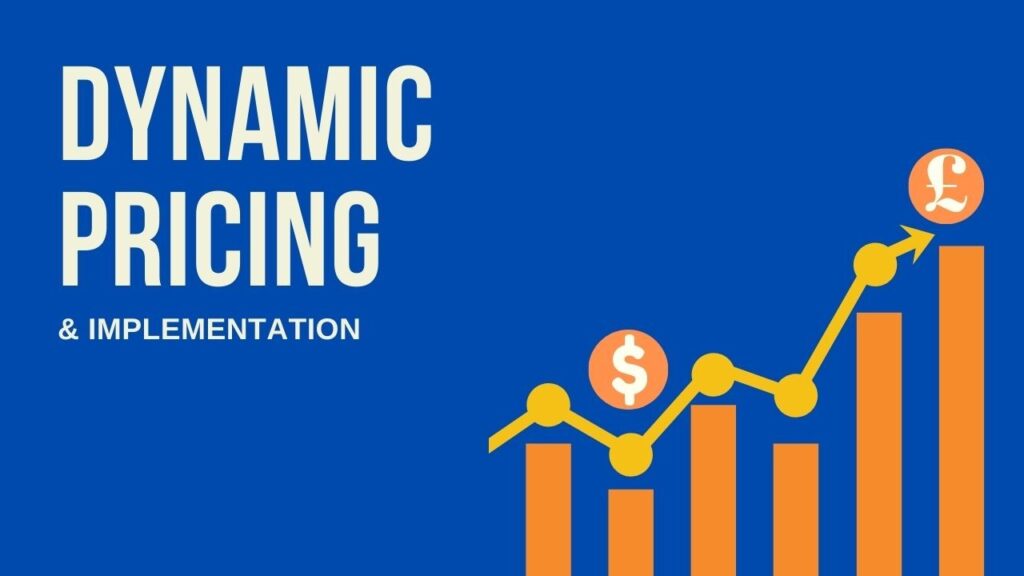Dynamic pricing, often referred to as surge pricing or demand pricing, is a strategy where businesses adjust the prices of their products or services in real-time based on various factors such as demand, competitor pricing, and market conditions. This innovative pricing model has gained significant traction across various industries, revolutionizing the way businesses set prices and maximizing their revenue potential.
Types of Dynamic Pricing
Time-based Pricing
Time-based pricing involves adjusting prices according to the time of day, week, month, or year. For example, movie theaters often offer matinee pricing for early screenings to attract customers during off-peak hours.
Demand-based Pricing
Demand-based pricing relies on the principle of supply and demand. When demand is high, prices increase, and when demand decreases, prices decrease. This strategy is commonly used in industries such as hospitality and transportation.
Segment-based Pricing
Segment-based pricing involves dividing customers into different segments based on factors such as demographics, purchasing behavior, and location. Prices are then tailored to each segment to maximize profitability.
Event-based Pricing
Event-based pricing is employed for specific events or occasions. For instance, hotels and restaurants may increase their prices during holidays or major events happening in the vicinity.
Advantages of Dynamic Pricing
Dynamic pricig offers several benefits to businesses, including:
Increased Revenue
By adjusting prices based on demand and other factors, businesses can maximize their revenue potential and capitalize on market opportunities.
Improved Customer Satisfaction
Dynamic pricng allows businesses to offer competitive prices and promotions, enhancing customer satisfaction and loyalty.
Competitive Advantage
Businesses that implement dynamic ain a competitive edge by staying agile and responsive to market dynamics, outperforming competitors with static pricing strategies.
Challenges of Dynamic Pricing
Despite its benefits, dynamic priing poses some challenges, including:
Price Perception
Customers may perceive frequent price changes as unfair or deceptive, leading to a negative perception of the brand.
Implementation Complexity
Implementing dynamic pricing requires sophisticated pricing algorithms and technology infrastructure, which can be complex and costly for businesses.
Regulatory Issues
Dynamic pricing practices may raise regulatory concerns, particularly regarding pricing discrimination and antitrust laws.
Case Studies
The airline industry is a prominent example of dynamc pricing in action. Airlines adjust ticket prices based on factors such as demand, seasonality, and competitor pricing, maximizing revenue on each flight.
E-commerce giants like Amazon and Walmart utilize dynamc pricing algorithms to adjust product prices in real-time based on factors such as customer browsing history, competitor prices, and inventory levels.
Tools and Technologies for Dynamic Pricing
To implement dynamic prcing effectively, businesses can leverage advanced pricing optimization software and machine learning algorithms. These tools analyze vast amounts of data to identify pricing opportunities and optimize prices for maximum profitability.
Best Practices for Implementing Dynamic Pricing
Successful implementation of dynami pricing requires:
Data Analysis and Forecasting
Businesses must collect and analyze relevant data to understand market trends, customer behavior, and competitor pricing dynamics. Accurate forecasting is essential for making informed pricing decisions.
Continuous Monitoring and Adjustments
Dynamic pricng is an ongoing process that requires continuous monitoring of market conditions and competitor pricing. Businesses must be agile and prepared to adjust prices in real-time to stay competitive.
Ethical Considerations
While dynami pricing offers significant benefits, businesses must consider ethical implications such as fairness in pricing and transparency with customers. Pricing strategies should be transparent and non-discriminatory to maintain trust and credibility.
Future Trends in Dynamic
The future of dynamic is characterized by:
Personalized Pricing
Advancements in data analytics and AI will enable businesses to offer personalized pricing based on individual customer preferences, purchasing history, and willingness to pay.
Integration with IoT and Big Data
The integration of dynamic pricing with IoT devices and big data analytics will enable real-time pricing adjustments based on factors such as weather conditions, traffic patterns, and customer behavior.
Conclusion
Dynamic pricing has emerged as a powerful strategy for businesses to optimize their pricing strategies and maximize revenue potential. By leveraging advanced technology and data analytics, businesses can stay agile and responsive to market dynamics, gaining a competitive edge in today’s dynamic business environment.

